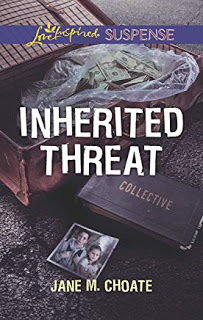REVISIONS—A TIERED APPROACH
-by guest, Jane Choate
As some of you may know, I write for Love Inspired Suspense. I have just sold my sixth book to them and am rejoicing in the sale, along with despairing if I can pull off another book. Sometimes I feel like a fraud, a little girl playing at being a writer.
Writing for LIS is not for the faint of heart. The guidelines constantly keep me on my toes, including having the hero and heroine meet immediately, ending every scene and chapter with something that, as my editor says, “doesn’t fall flat,” and weaving the suspense with the faith element and the romance. It’s a constant balancing act.
I’ve had my proposals rejected and wonder if I’ll ever get it right. Fortunately, I have a patient and skilled editor, Dina Davis, who doesn’t give up on me even when I make the same mistakes over and over. (Putting in too much backstory is one of my “frequent-flyer mistakes.)
Rejections mean revisions, and that’s what I’d like to address today.
Revisions. We love them. We hate them. Sometimes we both love and hate them at the same time. After writing thirty-seven books and hundreds of short stories and articles, I’ve had some experience with revisions. You’d think I’d get better doing them over the years, but I still struggle--mightily.
So let me share some things I’ve learned along the way. We’re going to do this in a step/action way.
 STEP 1: Start big. That’s right. Don’t start with words and sentences. Start with the book itself. We call this story level edits. (NOTE: We’re starting big and working our way down because doing the big-picture edits, which may involve deleting scenes or even whole chapters, before moving on to the micro edits, prevents you from having to re-edit something you’ve already revised.)
STEP 1: Start big. That’s right. Don’t start with words and sentences. Start with the book itself. We call this story level edits. (NOTE: We’re starting big and working our way down because doing the big-picture edits, which may involve deleting scenes or even whole chapters, before moving on to the micro edits, prevents you from having to re-edit something you’ve already revised.)
ACTION: Ask yourself the hard questions. Questions like does my premise work? Does the book make sense? Will readers relate to the characters? Does it have a hook? Is there continuity to the book or is it just a string of isolated incidents stuck together in some kind of random order? What do you do if you can’t answer “yes” to these questions? You get to work and keep working until you can answer “yes.” if after reading through your manuscript, you decide that the main character or characters (MC) aren’t very likeable. An unlikeable MC is a sure-fire way to keep your manuscript sitting on the shelf or in the computer. What can you do to make him more relatable? Give him strengths; give him flaws. Make him honest and genuine. By now, you’re probably getting the idea that if your story doesn’t work on these levels, it’s going to need major revisions.
 STEP 2: Downsize. Nope. You’re not downsizing your house, but you are downsizing in your revision structure. Move on to your scenes. Scenes are the building blocks of chapters.
STEP 2: Downsize. Nope. You’re not downsizing your house, but you are downsizing in your revision structure. Move on to your scenes. Scenes are the building blocks of chapters.
ACTION: Once again, start with questions. Does each scene have a purpose? If the sole purpose of a scene is to simply showcase your writing talents, delete it, no matter how much you love the scene, how flawlessly it is written, how you have captured the beauty of a setting. Every scene should accomplish something—either develop character, move the action forward, illuminate relationships between the characters. Ideally, a scene will accomplish a couple of purposes.
 STEP 3: Does the scene have a cliff-hanger ending? It should. It need not be a major cliff-hanger fraught with danger and live or die suspense. It can end with the MC asking herself a question, the answer of which will impact the story journey. Or it can end with the MC in mortal danger, her very life in question. Vary the kind of scene endings. Don’t always have the character in peril … unless you are writing a PERILS OF PAULINE type novel.
STEP 3: Does the scene have a cliff-hanger ending? It should. It need not be a major cliff-hanger fraught with danger and live or die suspense. It can end with the MC asking herself a question, the answer of which will impact the story journey. Or it can end with the MC in mortal danger, her very life in question. Vary the kind of scene endings. Don’t always have the character in peril … unless you are writing a PERILS OF PAULINE type novel.
ACTION: At the risk of being repetitious, start with questions. Are your paragraphs related? Are they coherent? Or do you jump from one subject to another without thought to continuity? Do the paragraphs in a scene build to a climax? Then look at the sentences that compose the paragraphs. Do you vary the sentence length in your paragraphs? Or are all the sentences appoximately the same length? Do you vary the kinds of sentences? Do you vary the tone of the sentences? Like every scene, every paragraph should serve a purpose. If, in your revisions, you come across a paragraph whose sole purpose it to wax poetic about a sunset without that sunset in some way giving insights into the character or affecting the plot, get rid of it. We have all seen beautiful sunsets. We don’t need to be treated to a lyrical description of it, however artfully you describe it.

STEP 4: Move on to paragraphs. Just as scenes are the building blocks of chapters, paragraphs are the building blocks of scenes. Paragraphs should flow from one to the other in a natural sequence.
 STEP 5: Look at your word choice.
STEP 5: Look at your word choice.
ACTION: Word choice is a subjective thing. The words you choose are a product of your education, experiences, personal taste, and a myriad of other things. First, check your word darlings at the door. Consider doing a search of your manuscript to determine if you have some of these darlings which you use over and over (and over). When I did that with a recent manuscript, I discovered that I was in love with the word focus. Every character was focusing on something. Every plot point used focus to … well … focus in it. My use of the word was more than redundant; it was downright embarrassing. Painstakingly, I went through the whole book and rewrote dozens of sentences, limiting my use of the word to only a few times. What are your pet words? One author I know (a very successful author) uses "mutter" repeatedly. Her characters are always muttering their remarks. In this case, a simple said would work far better.
Another consideration in word choice: are the words your character uses right for her? If you are writing a coming-of-age novel set in a small town in Tennessee during the Great Depression, your character might not use sophisticated words. If she does, give her a reason for her choices and the appropriate background to make her using those words make sense. A cowboy might not use the word ”salacious,” and a city girl might not use the word “over yonder.” These are, of course, exaggerated examples, but you get the drift.
What about your word choices in descriptions? Have you relied on tried-and-true (and boring) cliches? Or have you found new and fresh ways to describe a graffiti-marred warehouse where drug deals are made? Have you dug deep for a new way to describe a bucolic setting with fields and cows? Have you done the hard work necessary to search for not just an okay word, but the absolute best word? Have you used a precise noun rather than a generic one? Can you say that “Azelas lined the sidewalk” rather than “Flowers lined the sidewalk?” Have you employed active, vivid verbs rather than prosaic ones? Is your six-year-old MC skipping along beside her mother or is she just walking? Maybe she is hopping over the lines in the sidewalk or jumping from one square to the other.
These are small but telling changes that will strengthen your writing.
Revisions can turn a ho-hum manuscript into one that shines and sparkles. They can elevate a second-rate story into a first-rate one? They can take your story from an almost-sale to a “Yes, I sold my book” one. And isn’t that what you want?
Bio:
Jane M. Choate dreamed of writing from the time she was a small child, entertaining her friends with outlandish stories, always complete with a happy ending. Writing for Love Inspired Suspense is a dream come true. Jane and her own real life hero have been married for 46 years, have 5 children, numerous grandchildren, and a cat who believes she is of royal descent.

INHERITED THREAT - AMAZON
After her estranged mother is killed by a crime syndicate, army ranger Laurel Landry knows she's next … and she needs help from ex-ranger turned bodyguard Mace Ransom. While Mace is used to doing things his way, their best chance of staying alive is relying on each other. There enemies aren't backing down … but together Laurel and Mace might be able to stop them for good. (This is the 5th book in Jane's S&J Security/Protection series.) INHERITED THREAT is Jane's 37th book.
As some of you may know, I write for Love Inspired Suspense. I have just sold my sixth book to them and am rejoicing in the sale, along with despairing if I can pull off another book. Sometimes I feel like a fraud, a little girl playing at being a writer.
Writing for LIS is not for the faint of heart. The guidelines constantly keep me on my toes, including having the hero and heroine meet immediately, ending every scene and chapter with something that, as my editor says, “doesn’t fall flat,” and weaving the suspense with the faith element and the romance. It’s a constant balancing act.
I’ve had my proposals rejected and wonder if I’ll ever get it right. Fortunately, I have a patient and skilled editor, Dina Davis, who doesn’t give up on me even when I make the same mistakes over and over. (Putting in too much backstory is one of my “frequent-flyer mistakes.)
Rejections mean revisions, and that’s what I’d like to address today.
Revisions. We love them. We hate them. Sometimes we both love and hate them at the same time. After writing thirty-seven books and hundreds of short stories and articles, I’ve had some experience with revisions. You’d think I’d get better doing them over the years, but I still struggle--mightily.
So let me share some things I’ve learned along the way. We’re going to do this in a step/action way.
 STEP 1: Start big. That’s right. Don’t start with words and sentences. Start with the book itself. We call this story level edits. (NOTE: We’re starting big and working our way down because doing the big-picture edits, which may involve deleting scenes or even whole chapters, before moving on to the micro edits, prevents you from having to re-edit something you’ve already revised.)
STEP 1: Start big. That’s right. Don’t start with words and sentences. Start with the book itself. We call this story level edits. (NOTE: We’re starting big and working our way down because doing the big-picture edits, which may involve deleting scenes or even whole chapters, before moving on to the micro edits, prevents you from having to re-edit something you’ve already revised.)ACTION: Ask yourself the hard questions. Questions like does my premise work? Does the book make sense? Will readers relate to the characters? Does it have a hook? Is there continuity to the book or is it just a string of isolated incidents stuck together in some kind of random order? What do you do if you can’t answer “yes” to these questions? You get to work and keep working until you can answer “yes.” if after reading through your manuscript, you decide that the main character or characters (MC) aren’t very likeable. An unlikeable MC is a sure-fire way to keep your manuscript sitting on the shelf or in the computer. What can you do to make him more relatable? Give him strengths; give him flaws. Make him honest and genuine. By now, you’re probably getting the idea that if your story doesn’t work on these levels, it’s going to need major revisions.
 STEP 2: Downsize. Nope. You’re not downsizing your house, but you are downsizing in your revision structure. Move on to your scenes. Scenes are the building blocks of chapters.
STEP 2: Downsize. Nope. You’re not downsizing your house, but you are downsizing in your revision structure. Move on to your scenes. Scenes are the building blocks of chapters.ACTION: Once again, start with questions. Does each scene have a purpose? If the sole purpose of a scene is to simply showcase your writing talents, delete it, no matter how much you love the scene, how flawlessly it is written, how you have captured the beauty of a setting. Every scene should accomplish something—either develop character, move the action forward, illuminate relationships between the characters. Ideally, a scene will accomplish a couple of purposes.
 STEP 3: Does the scene have a cliff-hanger ending? It should. It need not be a major cliff-hanger fraught with danger and live or die suspense. It can end with the MC asking herself a question, the answer of which will impact the story journey. Or it can end with the MC in mortal danger, her very life in question. Vary the kind of scene endings. Don’t always have the character in peril … unless you are writing a PERILS OF PAULINE type novel.
STEP 3: Does the scene have a cliff-hanger ending? It should. It need not be a major cliff-hanger fraught with danger and live or die suspense. It can end with the MC asking herself a question, the answer of which will impact the story journey. Or it can end with the MC in mortal danger, her very life in question. Vary the kind of scene endings. Don’t always have the character in peril … unless you are writing a PERILS OF PAULINE type novel.ACTION: At the risk of being repetitious, start with questions. Are your paragraphs related? Are they coherent? Or do you jump from one subject to another without thought to continuity? Do the paragraphs in a scene build to a climax? Then look at the sentences that compose the paragraphs. Do you vary the sentence length in your paragraphs? Or are all the sentences appoximately the same length? Do you vary the kinds of sentences? Do you vary the tone of the sentences? Like every scene, every paragraph should serve a purpose. If, in your revisions, you come across a paragraph whose sole purpose it to wax poetic about a sunset without that sunset in some way giving insights into the character or affecting the plot, get rid of it. We have all seen beautiful sunsets. We don’t need to be treated to a lyrical description of it, however artfully you describe it.

STEP 4: Move on to paragraphs. Just as scenes are the building blocks of chapters, paragraphs are the building blocks of scenes. Paragraphs should flow from one to the other in a natural sequence.
 STEP 5: Look at your word choice.
STEP 5: Look at your word choice.ACTION: Word choice is a subjective thing. The words you choose are a product of your education, experiences, personal taste, and a myriad of other things. First, check your word darlings at the door. Consider doing a search of your manuscript to determine if you have some of these darlings which you use over and over (and over). When I did that with a recent manuscript, I discovered that I was in love with the word focus. Every character was focusing on something. Every plot point used focus to … well … focus in it. My use of the word was more than redundant; it was downright embarrassing. Painstakingly, I went through the whole book and rewrote dozens of sentences, limiting my use of the word to only a few times. What are your pet words? One author I know (a very successful author) uses "mutter" repeatedly. Her characters are always muttering their remarks. In this case, a simple said would work far better.
Another consideration in word choice: are the words your character uses right for her? If you are writing a coming-of-age novel set in a small town in Tennessee during the Great Depression, your character might not use sophisticated words. If she does, give her a reason for her choices and the appropriate background to make her using those words make sense. A cowboy might not use the word ”salacious,” and a city girl might not use the word “over yonder.” These are, of course, exaggerated examples, but you get the drift.
What about your word choices in descriptions? Have you relied on tried-and-true (and boring) cliches? Or have you found new and fresh ways to describe a graffiti-marred warehouse where drug deals are made? Have you dug deep for a new way to describe a bucolic setting with fields and cows? Have you done the hard work necessary to search for not just an okay word, but the absolute best word? Have you used a precise noun rather than a generic one? Can you say that “Azelas lined the sidewalk” rather than “Flowers lined the sidewalk?” Have you employed active, vivid verbs rather than prosaic ones? Is your six-year-old MC skipping along beside her mother or is she just walking? Maybe she is hopping over the lines in the sidewalk or jumping from one square to the other.
These are small but telling changes that will strengthen your writing.
Revisions can turn a ho-hum manuscript into one that shines and sparkles. They can elevate a second-rate story into a first-rate one? They can take your story from an almost-sale to a “Yes, I sold my book” one. And isn’t that what you want?
Bio:
Jane M. Choate dreamed of writing from the time she was a small child, entertaining her friends with outlandish stories, always complete with a happy ending. Writing for Love Inspired Suspense is a dream come true. Jane and her own real life hero have been married for 46 years, have 5 children, numerous grandchildren, and a cat who believes she is of royal descent.

INHERITED THREAT - AMAZON
After her estranged mother is killed by a crime syndicate, army ranger Laurel Landry knows she's next … and she needs help from ex-ranger turned bodyguard Mace Ransom. While Mace is used to doing things his way, their best chance of staying alive is relying on each other. There enemies aren't backing down … but together Laurel and Mace might be able to stop them for good. (This is the 5th book in Jane's S&J Security/Protection series.) INHERITED THREAT is Jane's 37th book.
Published on July 18, 2019 21:00
No comments have been added yet.



